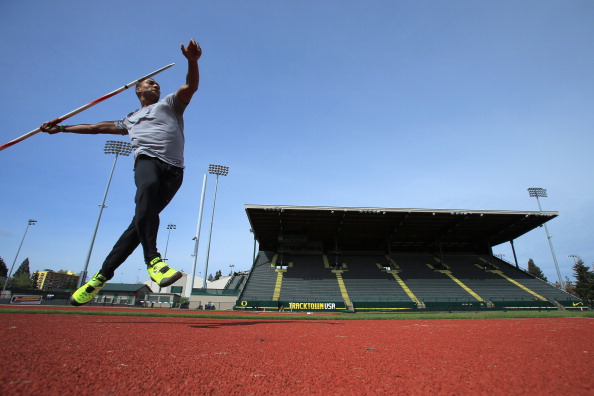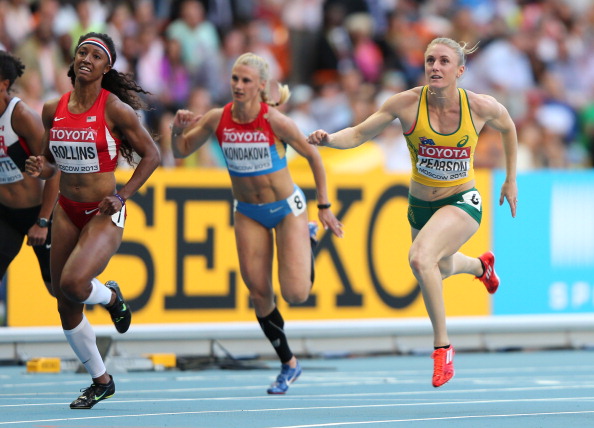SOPOT, Poland — The Sochi 2014 Winter Olympics rang the bell on a year of imagination and fresh thinking for the International Olympic Committee. The IOC’s all-members session immediately before the opening ceremony produced, over a day and a half, 211 comments from the floor.
The signal was clear for the new president, Thomas Bach, under the guise of his “Olympic Agenda 2020” program, as the IOC launched itself toward Monaco in December and another all-in assembly — he has a clear mandate for change, the members urging a fresh look at, well, pretty much everything.
In short: Be visionary. Be imaginative. Be creative.
So: here Thursday, the question emerged anew as track and field — still the most important of the international sports federations — prepared for its three-day indoor world championships.
Why not cross-country at the Winter Games?
Of course there’s already cross-country skiing at the Winter Olympics.
What about cross-country running?
“I think we have to contribute to the fight of this direction,” Lamine Diack, the president of the track and field federation, the IAAF, said at a news conference, adding a moment later, “Certainly, ourselves, we are looking at that.”
To begin with the most obvious challenge:
It’s commonly accepted that the Olympic charter says Winter Olympic sports must be played on snow or ice.
Here is what the charter says, word for word: “Only those sports which are practiced on snow or ice are considered as winter sports.”
Parse that as you will.
Here is what Bach has said, albeit in a different context, and parse this, too: “The Olympic charter is not set in stone. We have to evolve, adapt to modern times.”
The next issue: what about the weather?
It was of course warmer in Sochi, with its palm trees and 55-degree weather during the Olympics, than in Sopot. But Sopot, a cute little beach town that boasts the longest wooden pier in Europe, jutting out into the Baltic Sea, was not so bad Thursday at 37 degrees Fahrenheit or, if you prefer, almost 3 Celsius.
Great cross-country weather.
It was warmer most days in Vancouver in 2010 than it was in Sopot. And Torino in 2006 often saw weather comparable to Thursday in Sopot.
To be clear, these are the indoor championships at Sopot's Ergo Arena; cross-country is not on the competition schedule. The weather reports here, or in Vancouver or Torino, are winter talking points.
The weather report for Friday for Pyeongchang, South Korea, site of the 2018 Winter Games? High of 44. (7 Celsius.)
Cross-country running is not supposed to be like Fourth of July at the Santa Monica beach.
As the respected British track outlet Athletics Weekly has pointed out, cross-country often takes place on “muddy fields, thick turf or dusty trails,” but it has “also regularly been seen on snow.”
The 2012 European championships, just outside Budapest? Snow, icy ground, “vicious sub-zero temperatures,” and a “huge success.” The 2013 worlds, in Bydogoszcz, Poland — on an icy course.
Going all the way back to the 1992 cross-country world championships? On a snowy course in Boston.
Now, another positive for cross-country on the Winter Games program:
There are, in all, 204 national Olympic committee. Of those, 88 were in Sochi; of those 88, only three were African — Morocco, Togo and Zimbabwe. Putting cross-country on the program would do wonders for what the IOC calls “universality,” or the notion that the Games truly belong to the entire globe, especially the Winter Olympics.
There’s room on the running calendar for cross-country. It’s a fall and winter sport (in the northern hemisphere). The IAAF world championships are now held in odd-numbered years — 2013, 2015 and so on, meaning the Winter Games fall perfectly. The Olympics could offer spots for men, women and relays.
For those who simply want to argue that cross-country flatly can’t belong on the Winter program: explain basketball, a sport that stretches across the winter months if there ever was one, on the Summer Games program. You have 10 seconds.
Finally, there’s history — beautiful history and fantastic tradition — to consider:
Cross-country was part of the Summer Games in 1912, 1920 and 1924.
On race day in Paris in 1924, temperatures reached 103 degrees, or 40 celsius. Adding to the racers’ woes, as the story goes, were fumes from a nearby industrial chimney.
Only 15 of the 38 racers finished.
The alarm was such that cross-country was yanked from the program — and, of course, has never returned.
The first-place finisher in that 1924 team race was none other than one of the greatest long-distance Olympic runners of all time, Finland’s Paavo Nurmi.
Between 1920 and 1928 Nurmi won a record nine Olympic gold and three individual silver medals; in his career, he would set 22 official and 13 unofficial world records; there is a copy of a Waino Aaltonen statue of him in, among other places, the garden of the Olympic Museum in Lausanne, Switzerland, just a couple kilometers down the road from where the IOC is based.
Six years ago, the long-distance running aficionado Seppo Luhtala of Finland, too, had an idea — what about cross-country at the Olympics? Luhtala is the author of ‘Top Distance Runners of the Century’ and the producer of many films, including ‘Running is Your Life,” which followed Lasse Viren’s life and training prior to the 1980 Moscow Summer Games.
The line of Finnish distance running goes from Nurmi to Viren — Viren winning double gold in the 5 and 10k in both the 1972 and 1976 Games; he would finish fifth in the 10k in 1980.
Through his book, Luhtala got to know many of the world’s great distance runners. In 2008, three of them wrote a letter to the then-IOC president, Jacques Rogge, urging him to add cross-country to the Games as either a Summer or Winter sport, saying the problems of 1924 were “certainly unique” and it would be “wonderful” to give the world’s best cross-country runners the “chance to compete” at the Games.
The three signers: Haile Gebrselassie, Kenenisa Bekele, Paul Tergat.
It is difficult, given their many achievements, to know quite what to highlight:
Gebrselassie, from Ethiopia, is the 1996 and 2000 10k gold medalist; Bekele, also Ethiopian, the 2004 and 2008 10k gold medalist and 2008 5k gold medalist; Tergat, from Kenya, is the 1996 and 2000 silver medalist, the 2000 Sydney 10k considered one of the best races ever.
Tergat is now an IOC member.
Diack is, above all, a realist. He recognizes fully that the Winter Games sports federations are unlikely to welcome the addition of the IAAF to their show with, shall we say, champagne.
If cross-country can get on the Summer Games program — he allowed as that would work, too.
The Summer Games, though, are already so big.
There’s way more room for growth on the Winter side. And if ever it might be cross-country’s best chance to get into the Winter show, it’s now.
“Now,” Diack said, “we have to push.”















